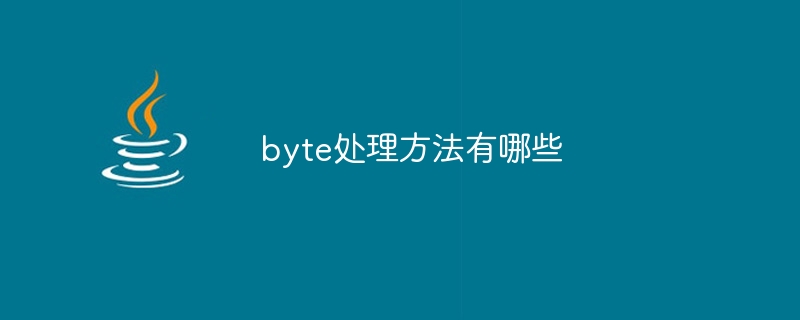

What are the byte processing methods? Specific code examples are required
In computer programming, byte (byte) is one of the most basic data types. It can store 8-bit binary data ranging from 0 to 255. In practical applications, we often need to process byte type data, such as reading and writing files, network transmission, encryption and decryption, etc. The following will introduce some commonly used byte processing methods and provide specific code examples.
Conversion between byte type and String type is a common operation. You can use the getBytes() method of the String class to convert a String into a byte array, or you can use the String constructor to convert a byte array into a String.
Example 1: String to byte array
String str = "Hello World"; byte[] bytes = str.getBytes();
Example 2: byte array to String
byte[] bytes = {72, 101, 108, 108, 111, 32, 87, 111, 114, 108, 100};
String str = new String(bytes);In some scenarios, data represented by byte type needs to be displayed or transmitted in the form of a hexadecimal string. You can use the toHexString() and parseInt() methods of the Integer class for conversion.
Example three: byte to hexadecimal string
byte b = 10; String hexString = Integer.toHexString(b & 0xFF);
Example four: hexadecimal string to byte
String hexString = "0A"; byte b = (byte) Integer.parseInt(hexString, 16);
When reading and writing files or transmitting over the network, it is often necessary to read and write byte data with InputStream/OutputStream. Conversion can be done using ByteArrayInputStream and ByteArrayOutputStream classes.
Example 5: byte to InputStream
byte[] bytes = {72, 101, 108, 108, 111, 32, 87, 111, 114, 108, 100};
InputStream inputStream = new ByteArrayInputStream(bytes);Example 6: InputStream to byte
InputStream inputStream = new FileInputStream("input.txt");
ByteArrayOutputStream outputStream = new ByteArrayOutputStream();
byte[] buffer = new byte[1024];
int length;
while ((length = inputStream.read(buffer)) != -1) {
outputStream.write(buffer, 0, length);
}
byte[] bytes = outputStream.toByteArray();Base64 encoding is a commonly used method to convert binary data into strings. You can use the java.util.Base64 class to convert between byte and Base64 strings.
Example 7: byte to Base64 string
byte[] bytes = {72, 101, 108, 108, 111, 32, 87, 111, 114, 108, 100};
String base64String = Base64.getEncoder().encodeToString(bytes);Example 8: Base64 string to byte
String base64String = "SGVsbG8gV29ybGQ="; byte[] bytes = Base64.getDecoder().decode(base64String);
The above are some common byte processing methods and their code examples. In actual development, we can choose the appropriate method to process byte data according to specific needs. Hope these examples are helpful!
The above is the detailed content of Different byte processing technologies. For more information, please follow other related articles on the PHP Chinese website!




